How to figure out which streaming media device to buy
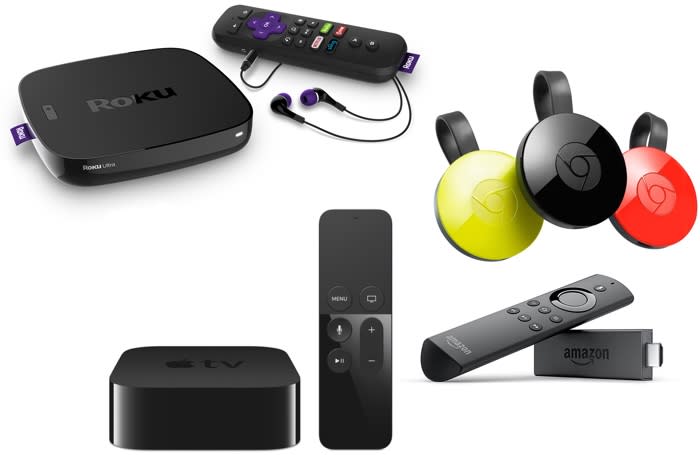
Picking a streaming-media player to watch Netflix and Amazon on your TV may seem like a simple process in comparing features and prices, but it’s actually rather difficult.
That’s because this isn’t exactly a normal market. Some companies, like Amazon and Apple, run their own digital video stores, produce shows and sell streaming-media hardware, which can push them to restrict content in ways that might make economic sense for them, but will probably annoy you, the paying customer.
So deciding between the different models of Apple TVs, Roku players, Amazon Fire TV devices, Google Chromecast or some other player that plugs into your TV may require not a spreadsheet, but a Venn diagram of overlapping site compatibility.
Apple vs. Amazon
This conflict of interest is never more obvious than with Apple (AAPL) and Amazon (AMZN), both of which run major streaming-video services and sell their own streaming-media players.
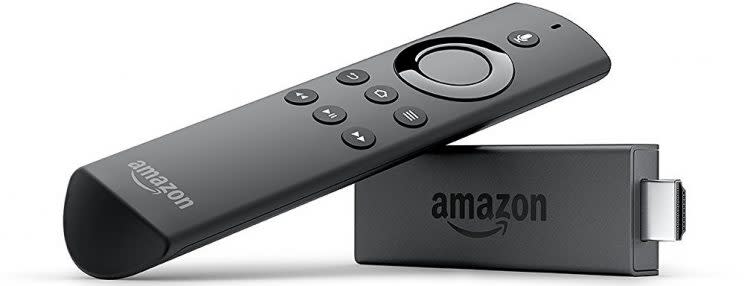
The situation with Apple fits into its history of limiting its services to its hardware: Enjoying TV shows and movies you rent or buy from iTunes on the biggest screen in your house without fussing with audio-video cables requires a $149 Apple TV.
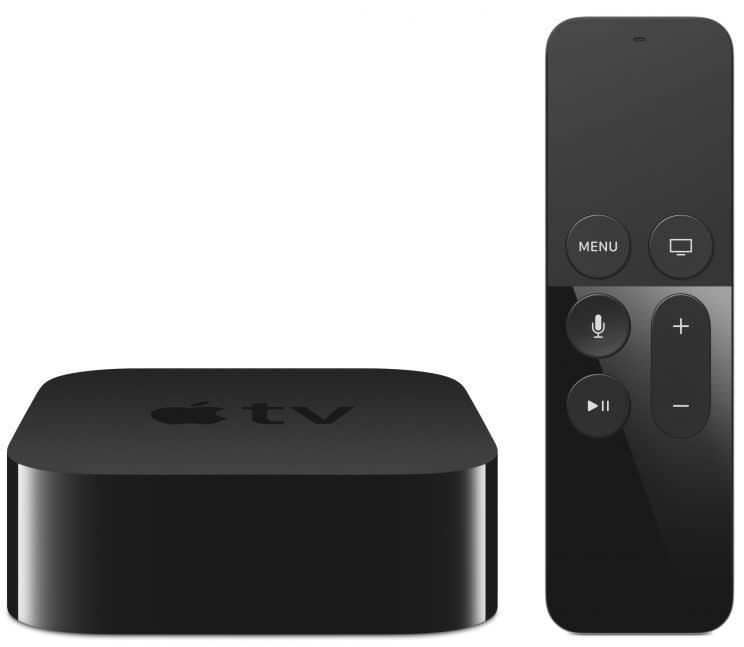
Amazon’s behavior makes less sense. It has long balked at shipping an Apple TV app, even though its iOS app supports AirPlay streaming to an Apple TV. Amazon has been just as recalcitrant about adding support for Google’s Chromecast to its iOS app or its Android app, which you can only install by disabling a security setting.
Last year, Amazon banned Apple TV and Chromecast devices from its storefront—a spectacularly petulant move.
But whatever you think of these companies’ conduct, Apple will keep being Apple and Amazon will keep being Amazon. Don’t buy a player hoping either will shed its stripes.
Everybody else
Roku comes the closest to being the Switzerland of streaming players—remember, it doesn’t sell its own video service. So if your taste in dystopian political dramas requires binge-watching both Netflix’s “House of Cards” and Amazon’s “The Man In The High Castle,” Roku is your best bet.
Amazon’s Fire TV devices also have Netflix, but its interface gives non-Amazon services second-class treatment. For example, Amazon’s “universal” voice search only gained the ability to find Netflix programming in September.
Google’s Play TV & Movies doesn’t offer any exclusive content of note, but if you want to user the service and don’t want to get a Google (GOOG) player, you’ll have to get a Roku.
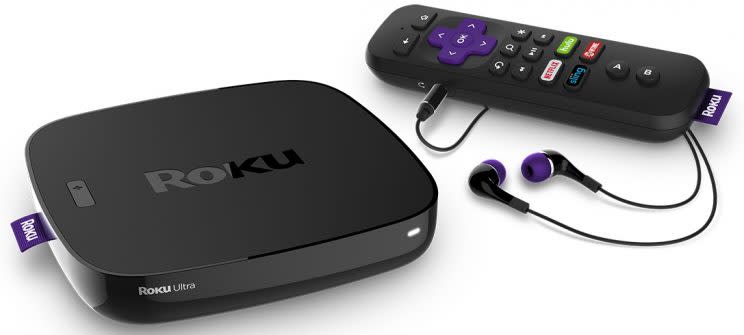
Putting aside Apple, Amazon and Google’s services, most other big-name streaming offering like Netflix, Hulu, Sling TV can be found on all major players. You’re also likely to find them on new smart TVs, connected Blu-ray players and even a new cable box: Comcast (CMCSA) added Netflix to its X1 boxes in early November and just announced Sling TV is coming to, as well.
If your video tastes are more obscure, Roku’s deeper selection is a better bet—see Jared Newman’s exhaustive comparison at TechHive of what’s on which players. That advantage led my colleague Daniel Howley to anoint Roku’s $50 Streaming Stick (discounted to $35 through Sunday), which plugs into an HDTV’s HDMI port, as the best media player.
If all the video apps you watch support both Roku and Fire TV, your decision gets more difficult. For instance, both Amazon and Roku offer 4K boxes for ultra high-definition streaming on an UHD TV—provided your internet connection is fast enough to support UHD streaming. Unfortunately, for many Americans that’s not the case.
The addition of Amazon’s Alexa personal assistant to the company’s Fire TV deserves attention if you have smart-home hankerings, and the Fire TV’s selection of games can represent a tiebreaker in its favor.
Fallback options: flash storage, Chromecast, or an HDMI cable
Of course, you can also play your own desktop or laptop’s files on your TV.
If you have a Mac, Apple has a commanding lead because of Apple TV’s built-in support for streaming from iTunes. That also applies if you have a Windows PC and like iTunes… which I realize will be a stretch.
Otherwise, Plex’s playback app—free with basic features, $39.99 a year or $149.99 for a lifetime subscription to get the app’s full set of capabilities—can handle streaming from a Mac or Windows PC to Roku and Fire TV devices.
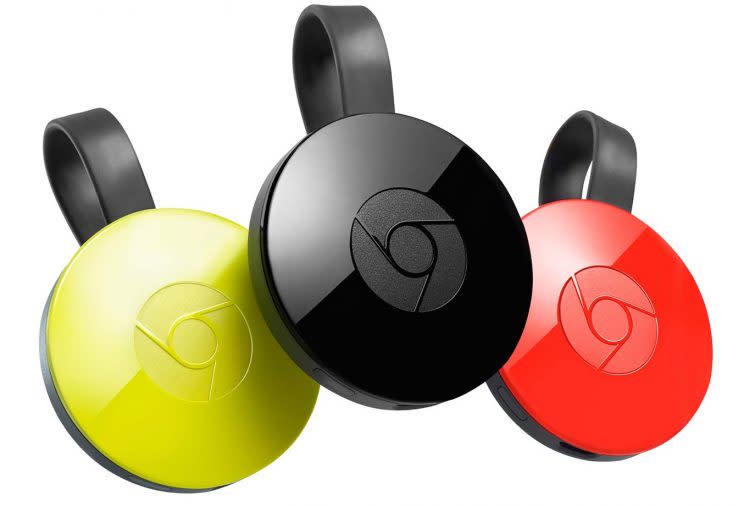
The USB ports and SD Card slots on full-sized Roku and Fire TV players (as opposed to their HDMI sticks) offer another way to play what’s in your house. Copy files to a flash drive or memory card—say, a holiday-party music playlist—and then pop that into the player.
That may leave the occasional site that doesn’t have an app for your media player or any other. You may want a cheap fallback option.
That’s where Google’s Chromecast (the regular $35 edition, not the $69, 4K-compatible version) can shine. If a site plays in Google’s Chrome browser, a click or tap on its Chromecast icon sends it directly to that little HDMI stick—although you may lose picture quality if you “cast” from an older, slower laptop.
A humble HDMI cable is even cheaper, costing only a few bucks online. Running one from a laptop to an HDTV may result in you being tripped up by that cable—and the power cord your laptop will need for extended viewing—but at least you won’t be getting tripped up by corporate power politics.
More from Rob:
Facebook didn’t get the memo about fake news. Of course it didn’t.
How watching videos online could get more annoying under Donald Trump
Twitter keeps innovating, but isn’t fixing these core problems
How hackers could use your smart home devices to launch web attacks
Email Rob at rob@robpegoraro.com; follow him on Twitter at @robpegoraro.


